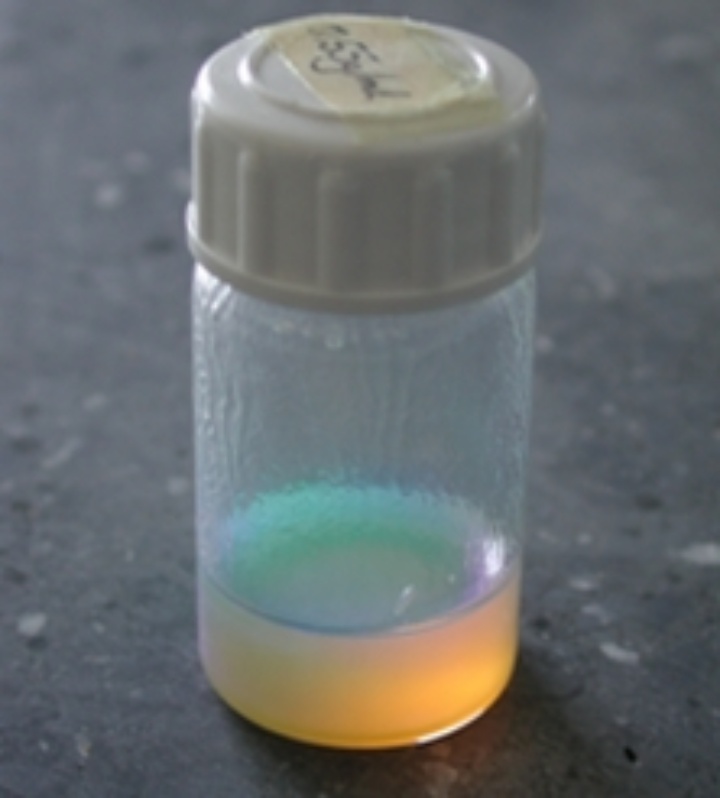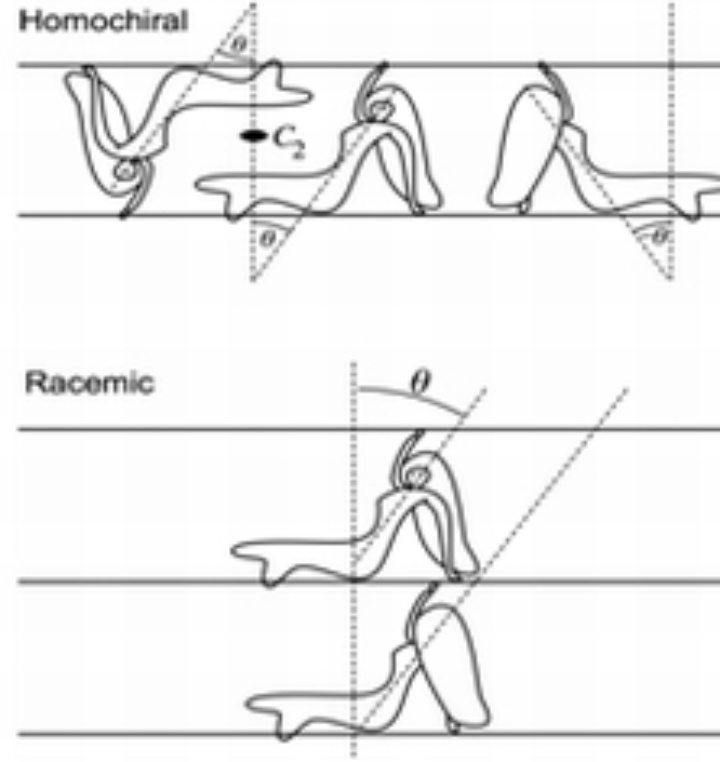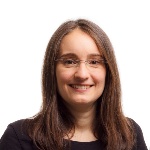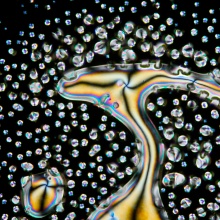

Chirality effects in liquid crystals
Chirality in liquid crystals has many striking consequences, the most common being helical super-structures which give the phases huge optical activity and an optical band gap. The latter means that many chiral liquid-crystal phases are self-organizing photonic crystals, a fact which today is put to use, for example, in developing tunable lasers. Chiral tilted smectics (among which the family of chiral SmC phases is by far the most important) are unique in that they constitute the only known cases of spontaneously polar phases in soft matter (i.e., polar on a meso- and/or macroscopic scale). The relation between chirality and polarity was realized by Robert B. Meyer in 1974 [J. Phys. Lett. 36, L69 (1975)], who thereby set off a whole new field of liquid crystal research, namely that on ferroelectric, and later also antiferroelectric, liquid crystals.
We are particular interested in the mechanism of „chiral induction“, i.e. the fact, that small amounts of chiral molecules dissolved in a non-chiral liquid crystal give rise to spectacular macroscopic chirality effects such as helicity and/or ferroelectricity. How does chiral induction work out on a molecular level, how is chirality transferred from the molecular to the macroscopic scale (intermolecular chirality transfer), and how do these soft, chirality-induced structures respond to external stimuli?
Selected publications
A lyotropic chiral smectic C liquid crystal with polar electrooptic switching
J. R. Bruckner, J. H. Porada, C. F. Dietrich, I. Dierking, F. Giesselmann
Angewandte Chemie International Edition 52, 8934-8937 (2013). DOI:10.1002/anie.201303344
Chiral Induction in Lyotropic Liquid Crystals: Insights into the Role of Dopant Location and Dopant Dynamics
U. C. Dawin, H. Dilger, E. Roduner, R. Scheuermann, A. Stoykov, F. Giesselmann, Angew. Chem. Int. Ed. 49, 2427-2430 (2010). DOI: 10.1002/anie.200904107
On the Origin of the 'Giant' Electroclinic Effect in a 'De Vries'-Type Ferroelectric Liquid Crystal Material for Chirality Sensing Applications
N. Kapernaum, D. M. Walba, E. Korblova, C. Zhu, C. Jones, Y. Shen, N. A. Clark, F. Giesselmann, ChemPhysChem 10, 890-892 (2009). DOI: 10.1002/cphc.200900065
Laser-light diffraction studies on the electric-field response of the helical director configuration in smectic-C* liquid crystals
M. Krueger, and F. Giesselmann, Journal of Applied Physics 101, 094102 (2007). DOI: 10.1063/1.2717609
The origin of the helical twist inversion in single component cholesteric liquid crystals
I. Dierking, F. Giesselmann, P. Zugenmaier, K. Mohr, H. Zaschke, and W. Kuczynski, Zeitschrift für Naturforschung A 49a, 1081-1086 (1994).

Frank Gießelmann
Prof. Dr.Professor
- Profile page
- +49 711 685 64460
- Write e-mail
- Secretary: Room 9-102; Tel. +49 711 685 64491

Nadia Kapernaum
Dr.Senior Scientist


